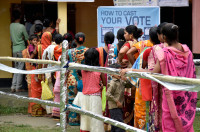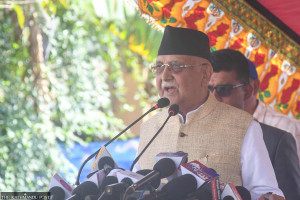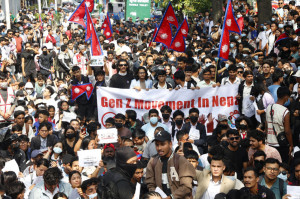Opinion
Thorny roses
Life does not come cheap for Nepali students in the United States
Nirakar Rajbhandari
I came to United States as a PhD student in the fall of 2010. I have lived the last eight years of my life in the U.S. engaged in cancer research. But one does not need to be a scientist or have a PhD to draw comparisons between the quality of life here compared to life in Nepal.While the positives are always there, it is also important to highlight some challenges experienced by some students. In this argument, I do not attempt to universalise experiences; I am simply highlighting the situation for some.
It is true that everything is big here, including buildings, cities, cars, and even burgers. What us Nepali people seldom mention, however, is that bank loans and debts tend to be big as well. The quality and the way of life in the U.S. for many Nepali’s can vary remarkably, depending upon their geographic location, immigration status, and their social positioning.
As I was a student here at some point, most of my friends have been students—ranging anywhere from undergraduate to postdoctoral trainees. By nature, my profession provides me with ample opportunities to interact frequently with students (both Americans and non-Americans), and I enjoy hearing about their personal life. I have been privy to a lot of their struggle as well as success stories. As a PhD student with full scholarship, monthly stipend and covered health benefits, I never had to worry about managing money for tuition fees and other living expenses. However, numerous interactions and informational interviews with other students, along with some research, have helped me to better understand the flawed and exorbitantly expensive college education in the U.S. and its emotional and mental effects on many students.
According to the 2018 report by the Organisation for Economic Cooperation and Development (OECD), the U.S. is host to the most expensive college education in the world. It typically costs well over $100,000 for a four year college degree. Many citizens often struggle to pay for their hefty college tuitions. This can be gauged by the fact that approximately 44 million American borrowers owe over $1.5 trillion in student loan debt (for example, over $37,000 debt per student borrower). The economic impact of the student loan debt is so immense that this crisis has now become the second highest consumer debt category in the country. Evidence suggests that debt and depression are often linked.
I do not intend to raise a false alarm, but depression is the most common health problem among college students in the U.S. It is the biggest risk factor for suicide. Although varieties of factors can contribute to depression during college life; financial woes, high student debt and gloomy job prospects after graduation can play a significant role in causing depressive episodes in college students.
While there has been no systematic survey to capture the possible mental health impacts faced by Nepali students in the U.S, such impacts and challenges associated with college education cannot be discounted. But for many students, anyone can easily understand that paying such an expensive tuition to receive a foreign degree can take a heavy toll onstudents and their families—especially froma country like Nepal, whose per capita income is well below $3000. To make things worse, non-residents immigrants, which is the status of many Nepali students, have to pay even higher fees in comparison to their American counterparts.
For some, especially those without financial security, choices are limited. The decisions include continuing education in the same college and pay the expensive tuition, change the major to a less costly degree, transfer to a less expensive community college, or drop out of the college completely. Most students are forced to take up multiple low paying part-time jobs, work longer hours and sometimes choose relatively unsafe jobs to make ends meet. They have to make major life decisions without an adequate support system. Multiple friends in my inner circle have transferred colleges two to three times, and changed their major three to five times in the duration of four years during their undergraduate studies, in an effort to be able to pay their tuition. Many of them already have college degrees, but most of them work in a profession unrelated to their degrees due to job limitations.
Despite such challenges, I have seen that a majority of these students have made those unforgiving situations work for them. It is really inspiring to see these students pushing their limits to maintain their work and school life balance. I have witnessed them display almost superhuman strength in pursuing their goals and achieving extraordinary success in spite of many hardships. I encourage everyone to understand that the U.S. is not the ‘goose that lays golden eggs’ for everyone, especially some students.
I encourage prospective students and their parents toengage in diligent research when selecting their colleges and to secure maximum possible scholarships before coming to the U.S. Discussions about Nepali students in educational systems around the world have finally come to the fore. For example, it was recently reported that several academic institutions in Australia have been admitting hundreds of Nepali students without receiving proper accreditation or abiding by existing education rules. As these conversations begin to take place, it is important to recognise the need for students to thoroughly research academic institutions and financial literacy before they leave Nepal.
Rajbhandari is a postdoctoral research fellow at the University of California San Diego.




 20.12°C Kathmandu
20.12°C Kathmandu










